Image report from trip to Ecuador and Galapagos 2013
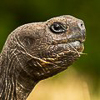
This summer finally it was time visiting the volcanic islands of Galapagos. The archipelago counting 13 islands is distributed on either side of the Equator in the Pacific Ocean about 900 km west of continental Ecuador in South-America and is very much basis for Charles Darwin’s studies and conclusions leading to his evolution theory published in his book On the Origin of Species published in 1859
Famous for their vast number of endemic species and the historical backdrop, combined with all I had read about the Galapagos over the years, I was looking forward to exploring the islands. But what should make me even more excited, was the underwater world.
We flew to the capital city of Ecuador, Quito. We started our trip on the mainland of Ecuador visiting Otavalo and then exploring the rain forest along Rio Napa going with a long motorised canoe. After a few days – and a few thousands of images of different species of hummingbirds and flower pierces – we went back to Quito and flew out to the Galapagos Islands. After embarking our small boat being our new floating home, we navigated for eight days visiting the western part of the archipelago including Santiago, north, west and south of Isabela, Fernandina, Rabida, Santa Cruz and Baltra islands. The scenery and wildlife were amazing, and seeing and photographing the iconic animals of Galapagos like the iguanas and giant tortoises was great. The underwater world was even more spectacular, giving unforgettable encounters with sea lions, sea turtles, sharks, stingrays and the fantastic variety of colourful fish, corals and underwater vegetation.
The indeed most impressive marine encounter was with the Pacific Manta-Ray, the largest of the rays. This giant eagle ray can reach 7 meters in wingspan, much larger than their cousins of stingrays. Giant Manta Rays are primarily plankton feeders, and they use the fins on the head to funnel plankton-rich water into the mouth where gill rakers filter out the plankton. The name Manta is Spanish for cloak or blanket, a type of blanket-shaped trap traditionally used to catch rays. Mantas are also known as devilfish because of their horn-shaped fins give them an evil appearance. The one we saw was the size of approximately 3 meters in wingspan, and following him was magical. He was gliding like a mystical underwater ghost bird with his flattened body shape giving me an out of time and out of space feeling. The experience and the sight are hard to explain with words, but I hope the photograph below will give you an impression… Just a remark: The white tips you can see on the wings and near the head of the Manta is not exaggerated in Photoshop; these white tips seems like glowing in the dark sea. Do click on the image to enlarge.
A special thanks go to our knowledgable Ecuadorian guide, Jairo Gusqui López, for not missing a species and giving a thorough understanding of the Galapagos’ wildlife, nature, geology and history – and for giving me enough “space” for my photography – over water as well as underwater. Also big thanks to the rest of the crew and other passengers/friends onboard Yate Fregatta giving us all a memorable trip and our Norwegian contact living in Quito, Anne Haugestad de Palacios, for all organising prior the trip.
Below you will find a selection of my images from the trip. Please click on the images to enlarge and see them in 1400px quality. Feel free to leave your comments below if you like.
 #1 The great and mystical Pacific Manta Ray.
#1 The great and mystical Pacific Manta Ray.
Nikon D4, AquaTech NY-4 Underwater Housing, Nikkor 24/2.8, 1/500 sec at f/11. ISO 1600.
 #2 Galapagos Sea Lion.
#2 Galapagos Sea Lion.
Nikon D4, AquaTech NY-4 Underwater Housing, Nikkor 24/2.8, 1/800 sec at f/11. ISO 1600.
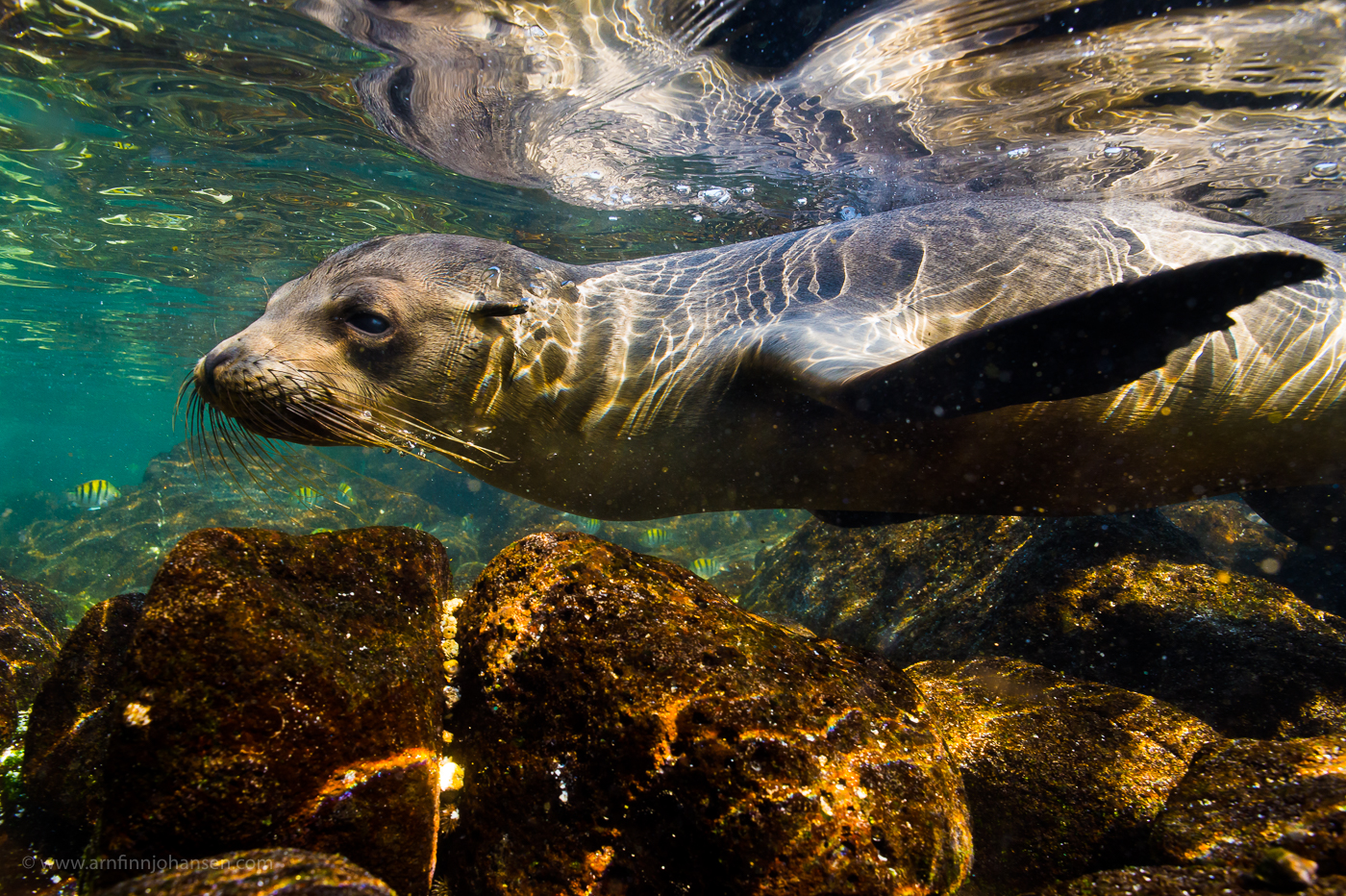 #3 Galapagos Sea Lion.
#3 Galapagos Sea Lion.
Nikon D4, AquaTech NY-4 Underwater Housing, Nikkor 24/2.8, 1/320 sec at f/11. ISO 1600.
 #4 Playful Galapagos Sea Lion.
#4 Playful Galapagos Sea Lion.
Nikon D4, AquaTech NY-4 Underwater Housing, Nikkor 24/2.8, 1/250 sec at f/11. ISO 1600.
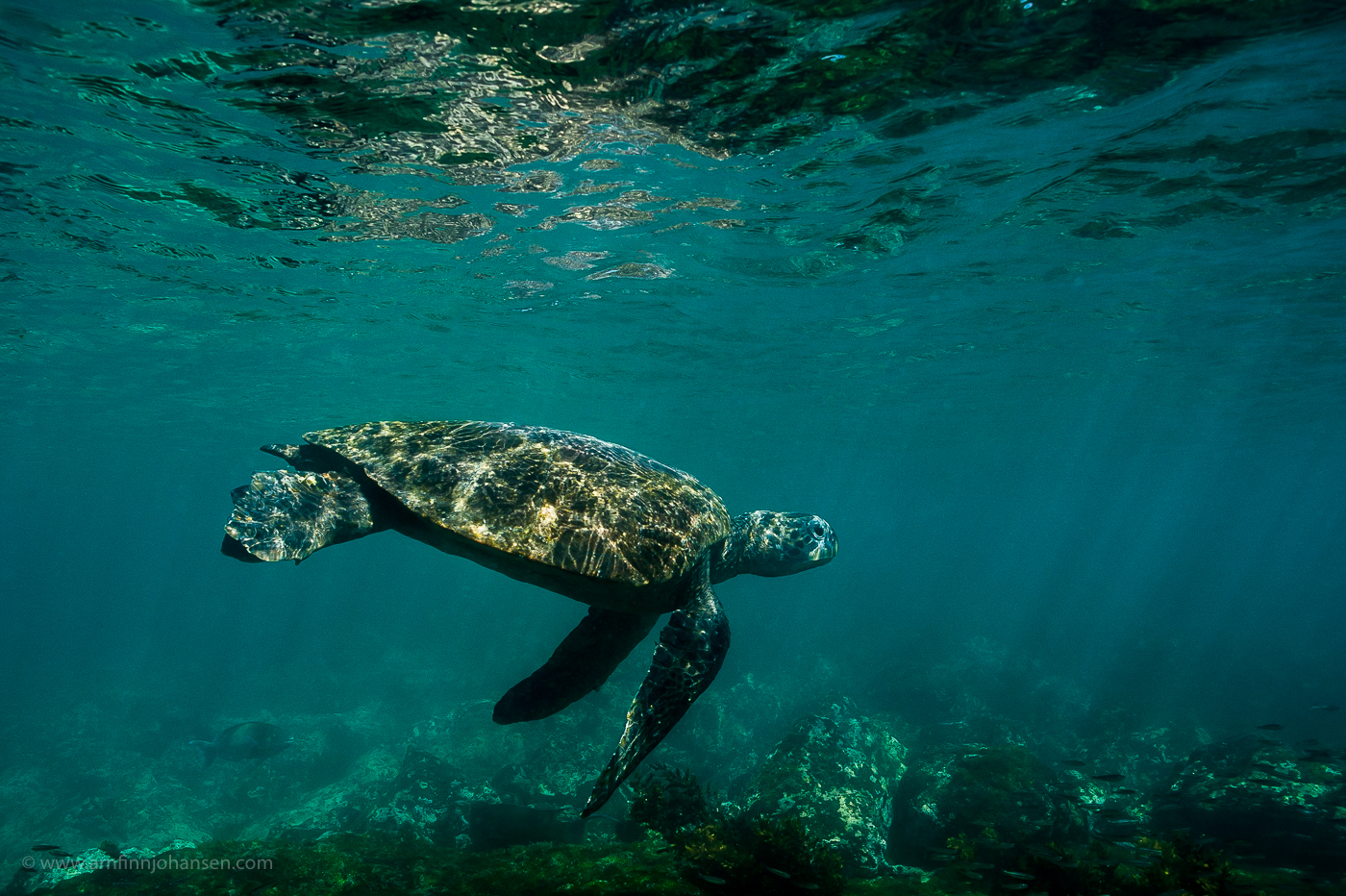 #5 Galapagos Green Turtle.
#5 Galapagos Green Turtle.
Nikon D4, AquaTech NY-4 Underwater Housing, Nikkor 24/2.8, 1/640 sec at f/11. ISO 1600.
 #6 Galapagos Green Turtle.
#6 Galapagos Green Turtle.
Nikon D4, AquaTech NY-4 Underwater Housing, Nikkor 24/2.8, 1/500 sec at f/11. ISO 1600.
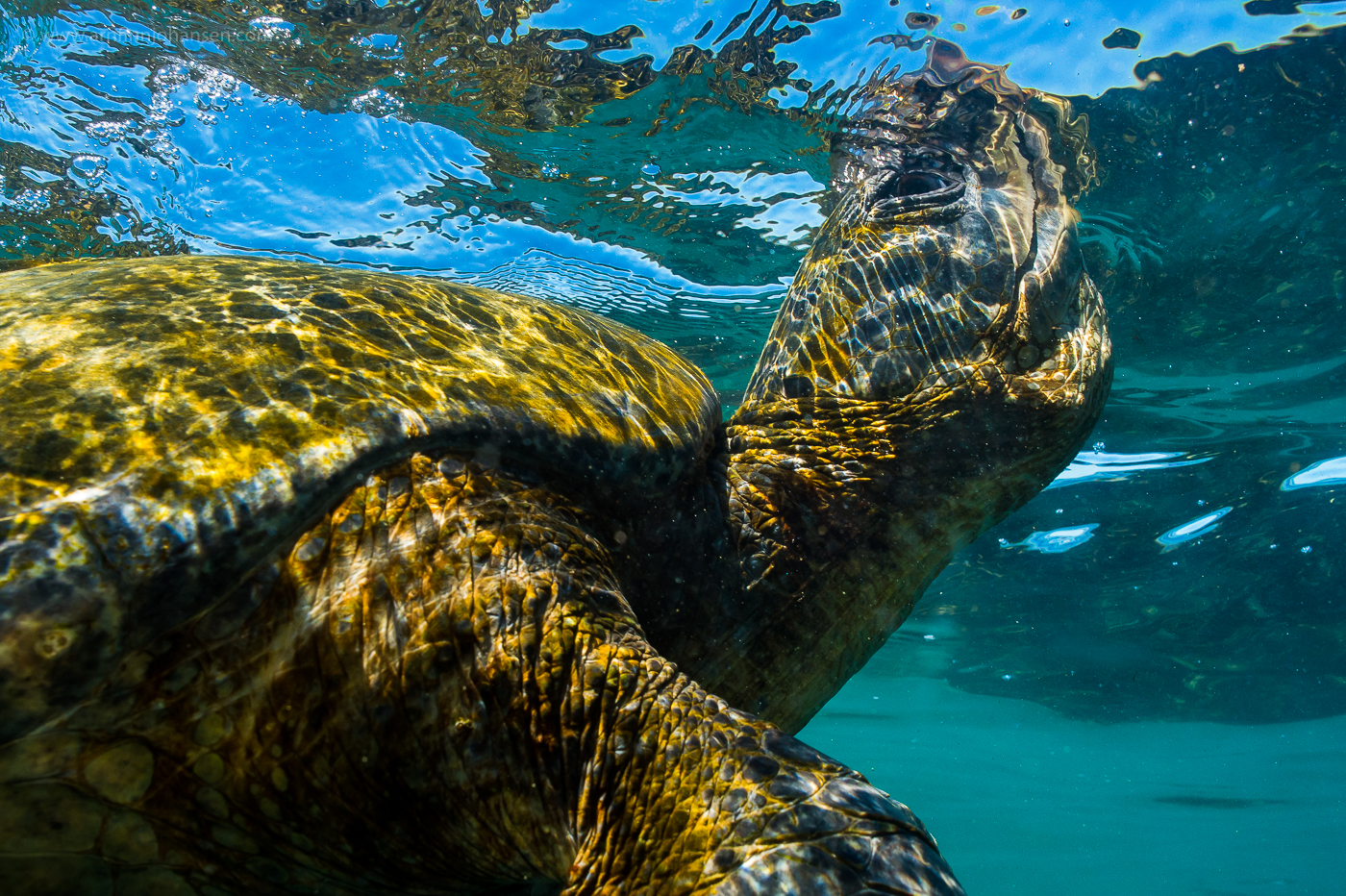 #7 Galapagos Green Turtle going up to surface for air.
#7 Galapagos Green Turtle going up to surface for air.
Nikon D4, AquaTech NY-4 Underwater Housing, Nikkor 24/2.8, 1/1000 sec at f/11. ISO 1600.
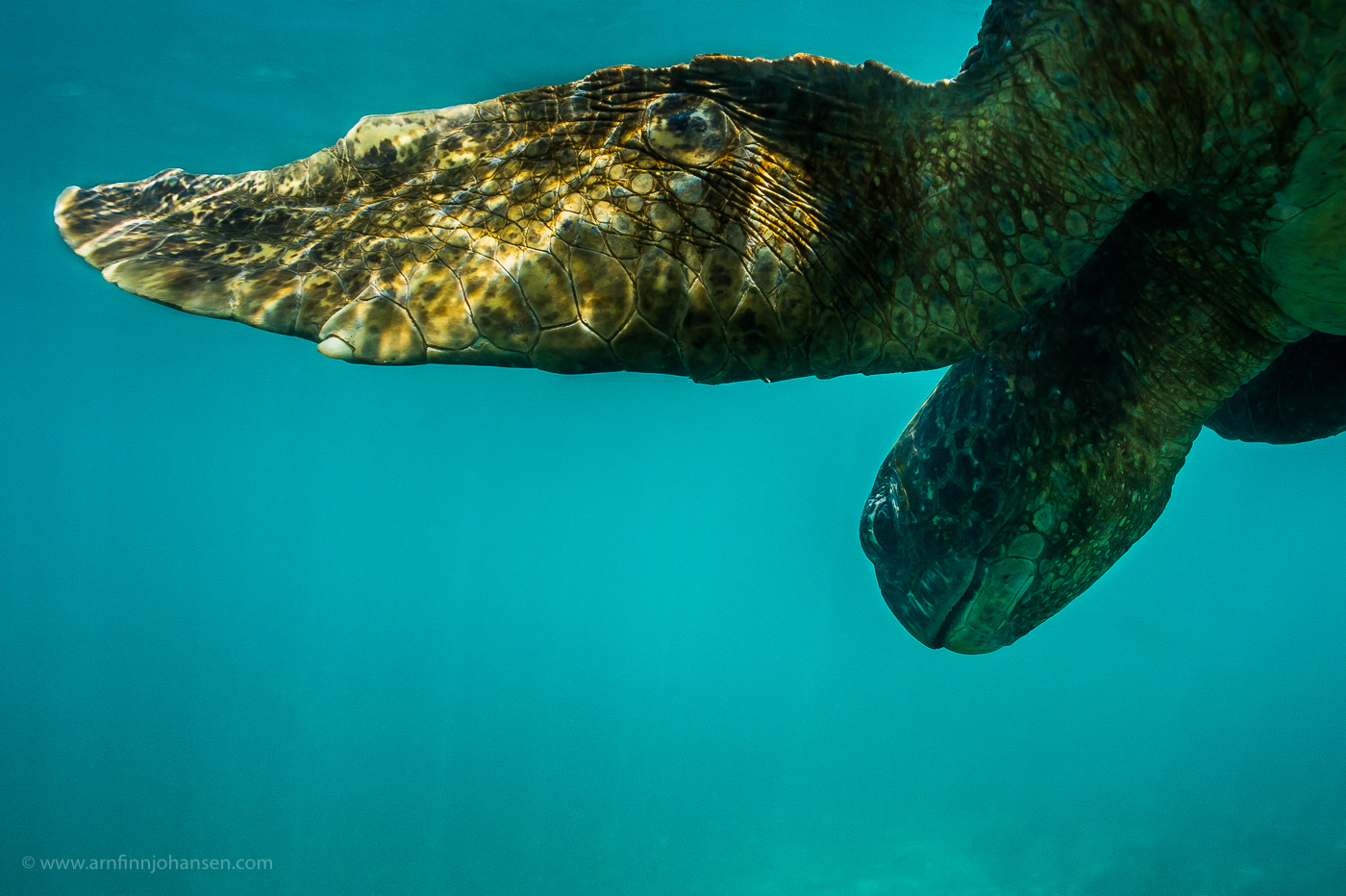 #8 Galapagos Green Turtle.
#8 Galapagos Green Turtle.
Nikon D4, AquaTech NY-4 Underwater Housing, Nikkor 24/2.8, 1/800 sec at f/11. ISO 1600.
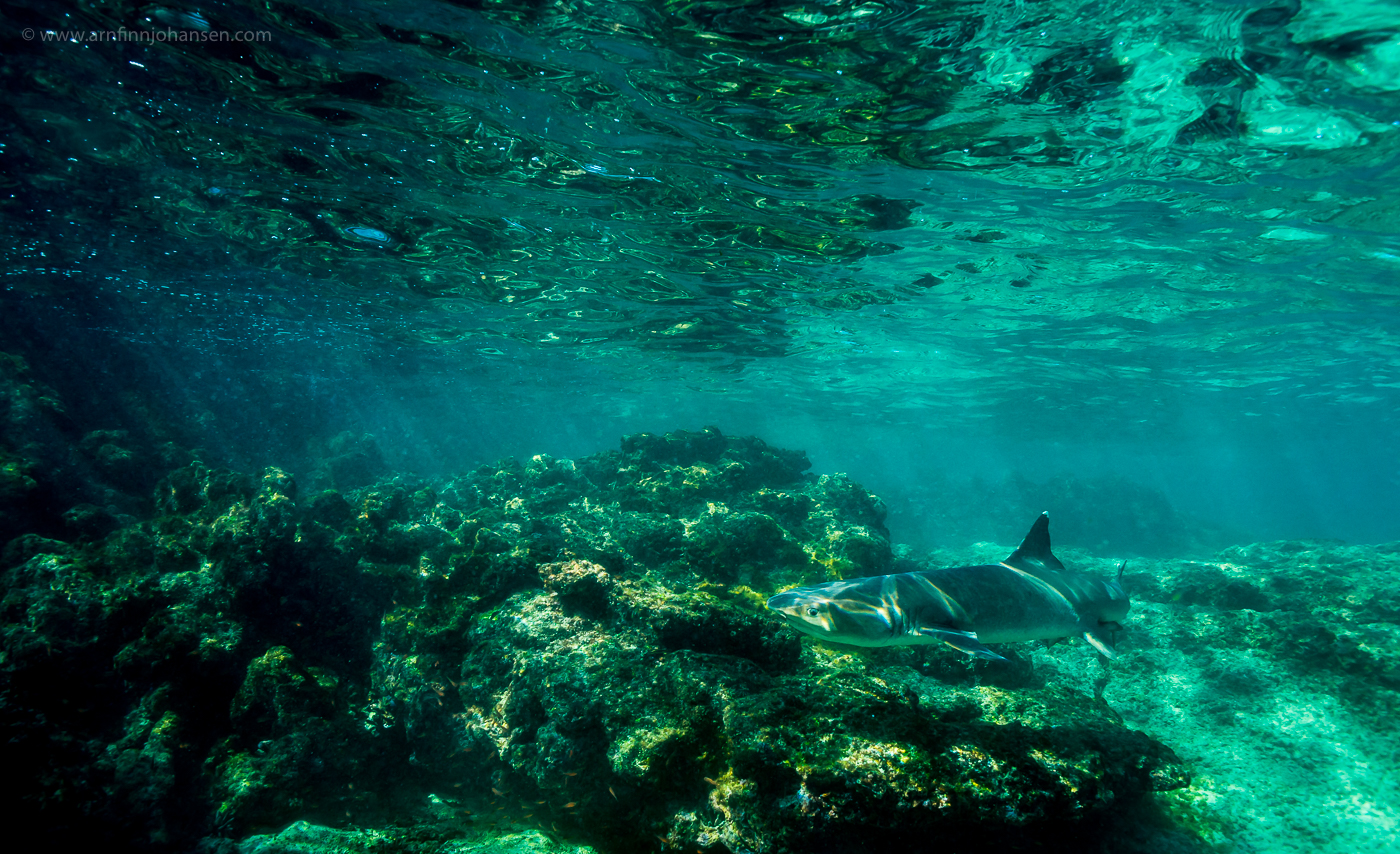 #9 White Tipped Reef Shark.
#9 White Tipped Reef Shark.
Nikon D4, AquaTech NY-4 Underwater Housing, Nikkor 24/2.8, 1/500 sec at f/11. ISO 1600.
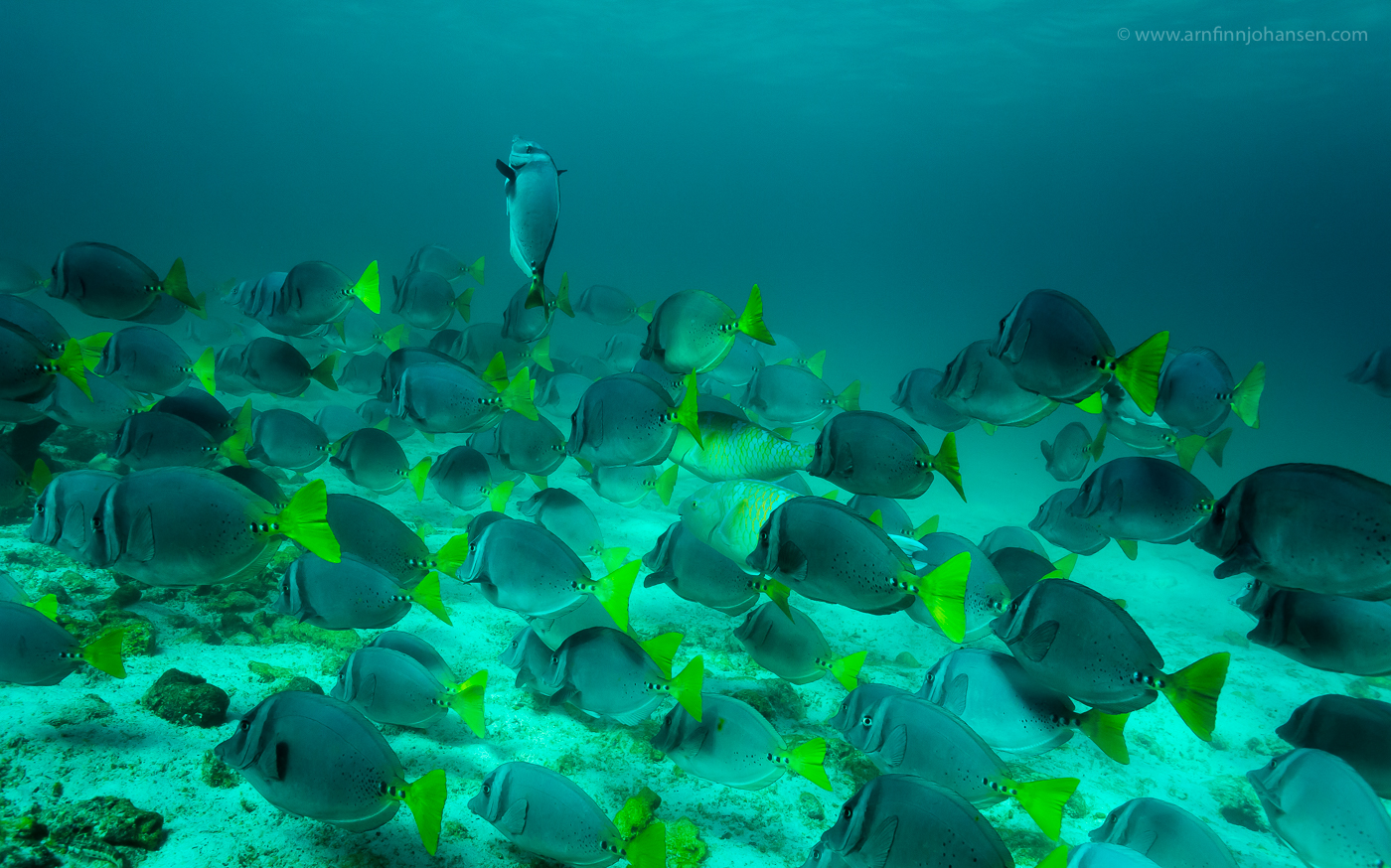 #10 Razor Surgeonfish.
#10 Razor Surgeonfish.
Nikon D4, AquaTech NY-4 Underwater Housing, Nikkor 24/2.8, 1/1250 sec at f/11. ISO 1600.
 #11 Marine Iguana.
#11 Marine Iguana.
Nikon D4, Nikkor 600/4 VR, 1/1000 sec at f/5. +2/3 EV, ISO 1400.
 #12 Marine Iguana.
#12 Marine Iguana.
Nikon D4, Nikkor 600/4 VR, 1/2000 sec at f/5. ISO 640.
 #13 Land Iguana.
#13 Land Iguana.
Nikon D4, Nikkor 600/4 VR, 1/1250 sec at f/5.6. ISO 450.
 #14 Galapagos Giant Tortoise portrait.
#14 Galapagos Giant Tortoise portrait.
Nikon D4, Nikkor 70-200/2.8 VR II + 1.4 converter, 1/1250 sec at f/5. +1 EV, ISO 900.
 #15 Blue-and-Yellow Macaw.
#15 Blue-and-Yellow Macaw.
Nikon D4, Nikkor 600/4 VR, 1/400 sec at f/8. -2/3 EV, ISO 1600.
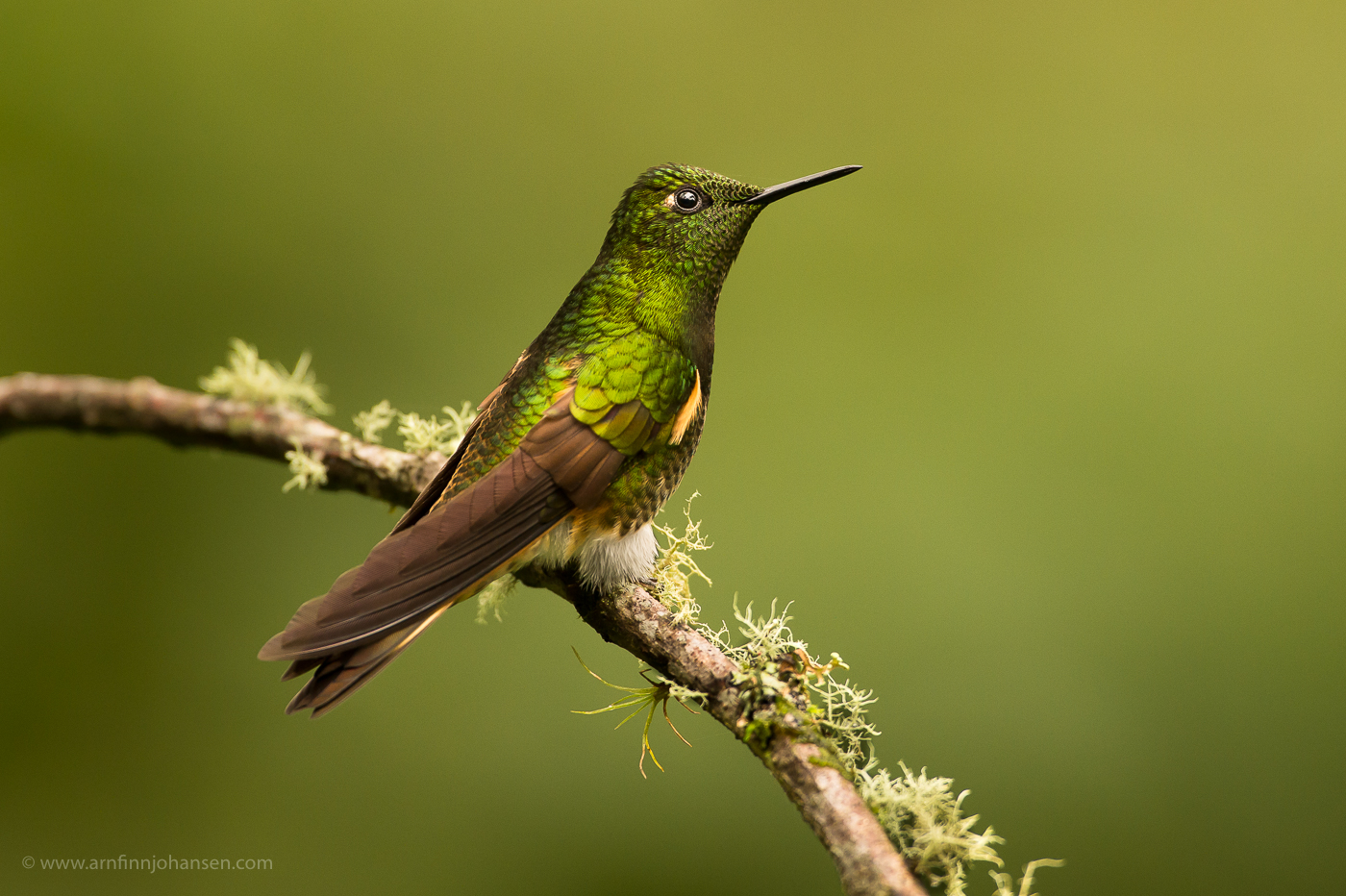 #16 Buff-tailed Coronet.
#16 Buff-tailed Coronet.
Nikon D4, Nikkor 600/4 VR, 1/640 sec at f/6.3. -2/3 EV, -1 EV, ISO 1800.
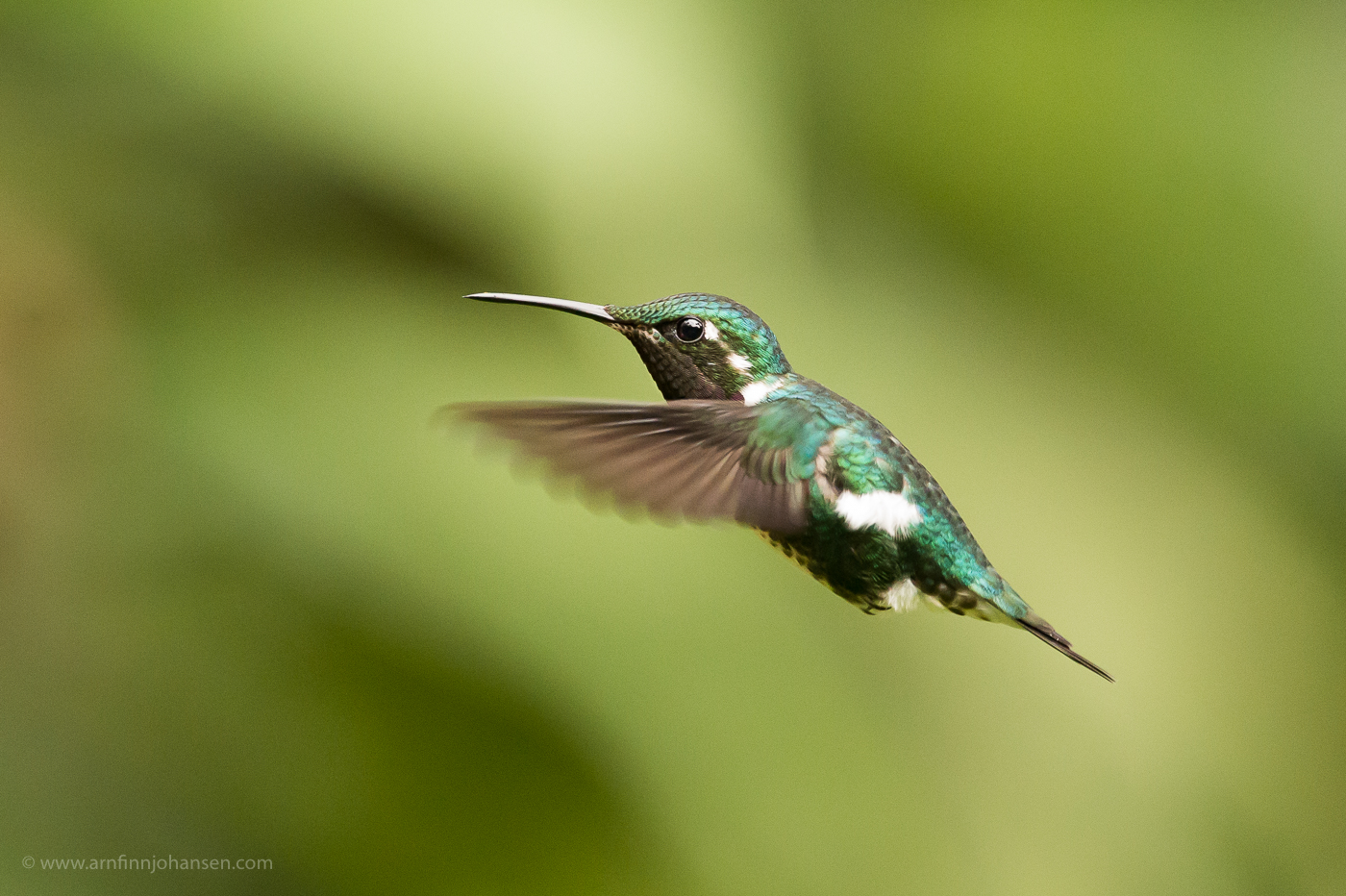 #17 White-bellied Woodstar.
#17 White-bellied Woodstar.
Nikon D4, Nikkor 600/4 VR, 1/500 sec at f/8. ISO 6400.
 #18 Long-tailed Sylph.
#18 Long-tailed Sylph.
Nikon D4, Nikkor 600/4 VR, 1/640 sec at f/8. -1 EV, ISO 5000.
 #19 Collared Inca.
#19 Collared Inca.
Nikon D4, Nikkor 600/4 VR, 1/800 sec at f/7.1. -1 EV, ISO 5000.
 #20 Chestnut-breasted Coronet.
#20 Chestnut-breasted Coronet.
Nikon D4, Nikkor 600/4 VR, 1/640 sec at f/8. -1 EV, -1 EV, ISO 4500.
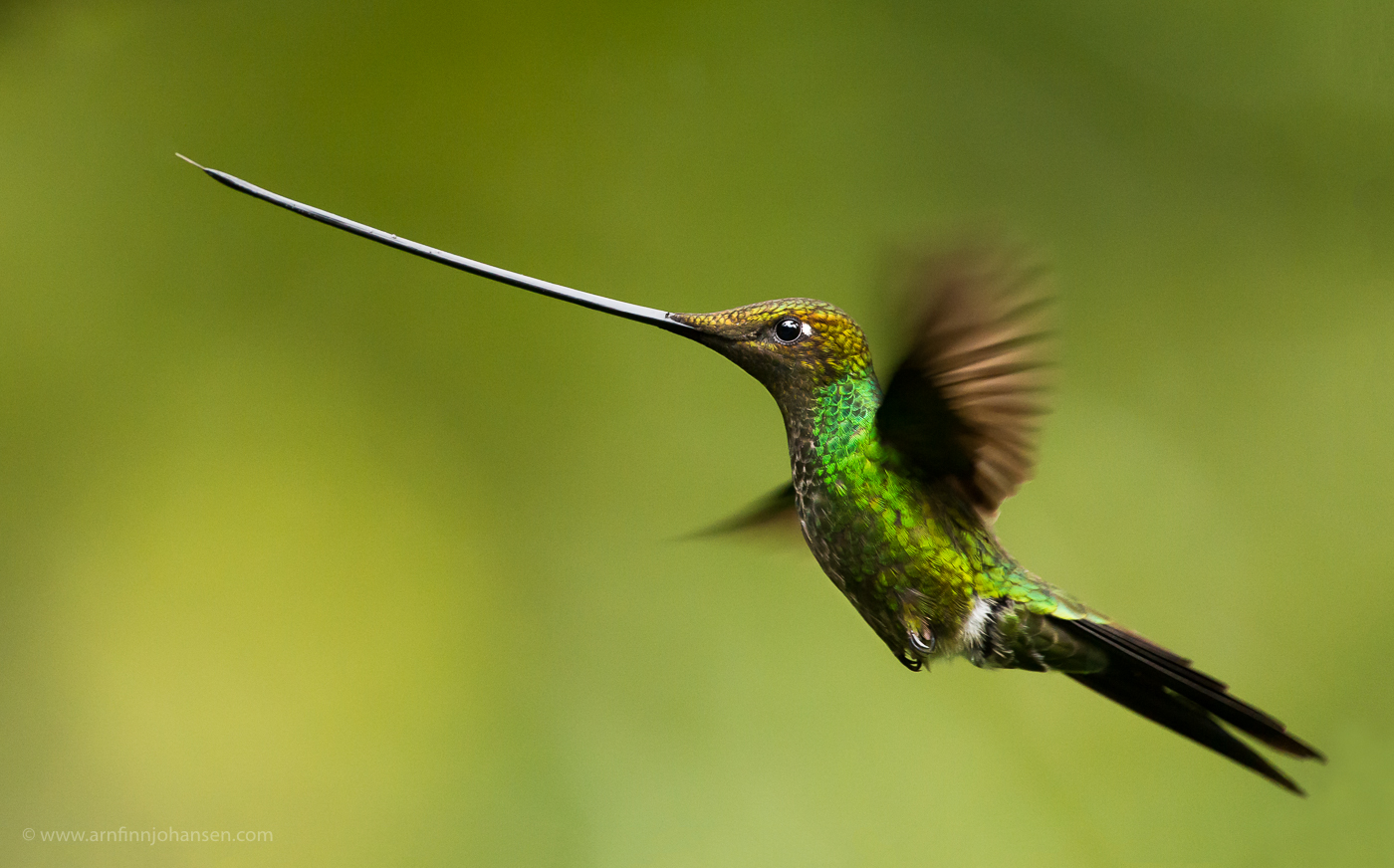 #21 Sword-billed Hummingbird.
#21 Sword-billed Hummingbird.
Nikon D4, Nikkor 600/4 VR, 1/800 sec at f/8. -1.3 EV, ISO 4000.

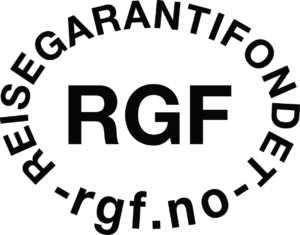


Hei Arnfinn…..
Bra jobba på Galapagos og i tåkeskogen. Flotte bilder hele veien! Får lyst på en ny tur til Equador…. 🙂
AJ
Fantastic pictures Arnfinn ! The hummingbirds are great, but my favorite is #2, beautiful capture!
…. eller kanskje du brukte blitz ???
Ikke benyttet blitz, Tom.
Wow, Arnfinn. Dette var flott !! .. både undervannbildene (tror faktisk jeg likte reef shark`n aller best), noen rett og slett nydelige portretter !! + sylskarpe fluktbilder av kolibrier UTEN blitz. Gratulerer !